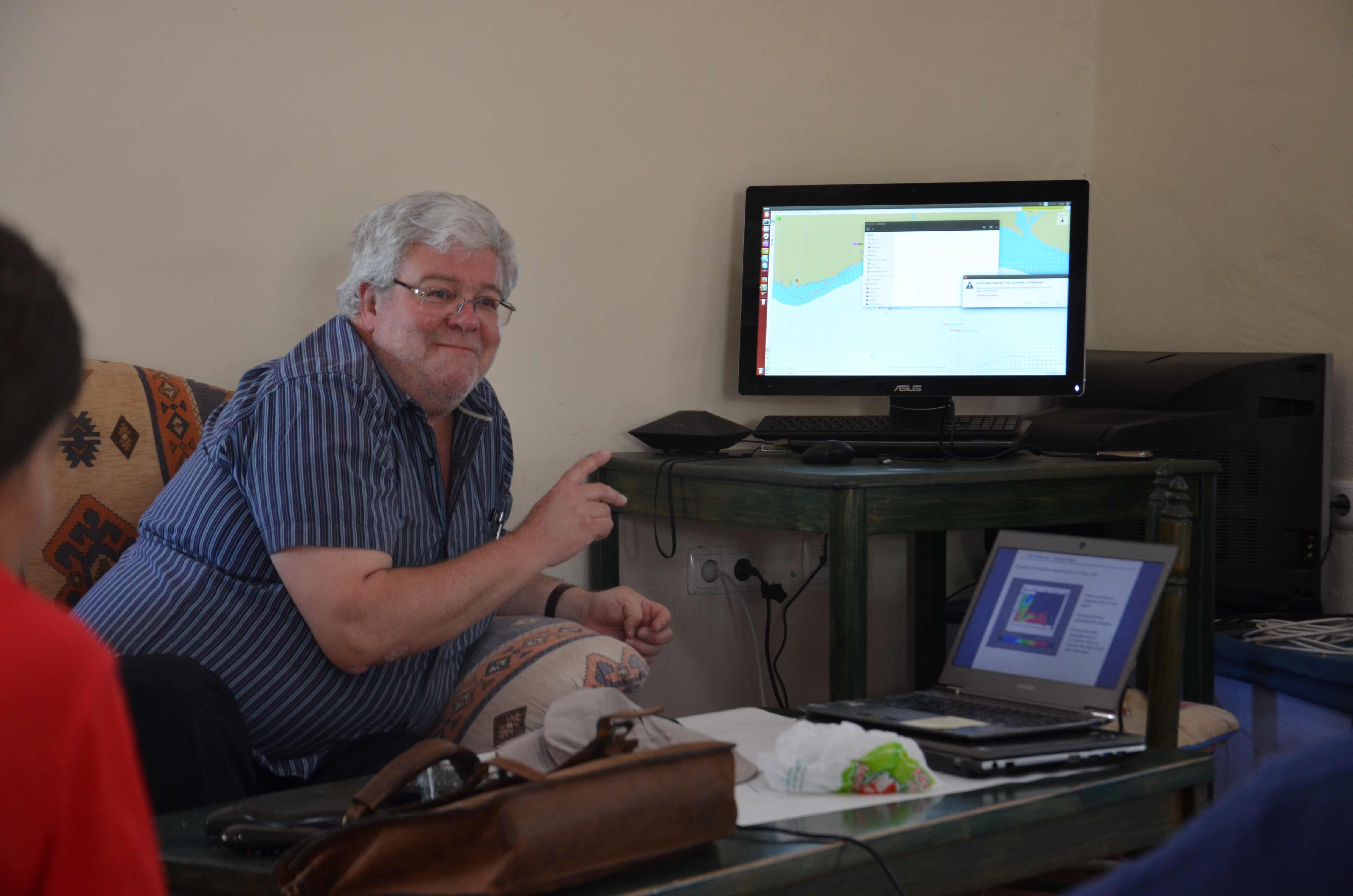Mounting worries and a lecture in Physical Oceanography of the Algarve
More twitching of thumbs and twitching of fingers as the Diplodus with new parts was still not operational. And with no clear trajectory out of this situation, the day was full of telephone calls from João Tasso and João Pereira. "Please, do you have a XXX type boat". XXX because really we have two fundamental problems.
- To get the WaveGlider stuck in the Olhão harbor for want of a ride outside the harbor and a meandering water channel.
- To get a vessel with a reasonable cabin for at least 3 people to operate out of, and the ability to have a deck low enough for AUV recovery (or having a crane) and enough space front or aft to launch and recover a UAV with our proven methods..
In essence we're looking to two vessels to get going; if one fits the bill, we'd be delighted. After all that was what the Diplodus was meant to be. And it looks like it wasn't just the two João's looking and searching, but our friends at IPMA and even our farm house hosts too. Tantalizing leads are emerging, but just so. Meanwhile, (as usual) the Navy has come in again and has suggested that the NRP Argos could be used once again and over the weekend. We are mulling the offer, since we don't want to make a nuisance of ourselves. And while it would get the AUVs back in the water, the struggle to get the WaveGlider to sea and certainly to fly continues. And our concerns mount, with the slated end of experiment getting closer....and closer. But we're not exactly sitting out in the gorgeous surroundings in the farm house and twiddling our thumbs; twiddling yes, being lazy no.
As luck have it, we did have an interesting morning. Late in the evening Wednesday 14th, as we were brainstorming on trying to understand both the spatial extant of where the Mola's might go after tag and release, and understand the resources at hand and how to be smart in deploying them (from ship or shore), we made a call to our friend Rui Caldeira, a physical oceanographer at the University of Madeira,to understand the dynamics of the physical processes in the inner shelf off of the Algarve coast. His immediate suggestion was to suggest getting in touch with his colleague Paulo Relvas of the nearby University of Algarve. "Talk to Paulo; he knows pretty much everything you wanted to know about the area" was his suggestion. So a rapid email exchange after the Benifica Vs Sevillia UEFA final late that night resulted in Paulo accepting to come and chat with us. Paulo is a physicist and professor of oceanography in Gambelas, near Faro. And better still, he actually lived close to the farm house where we were!
And talk he did and listen raptly we sure did. What was to be a short informal discussion turned out to be an amazing morning packed with solid and fascinating information about how non-intuitive the local dynamics in the coastal ocean are. Not only is there a substantial influence of the Mediterranean jet of water (high salinity, warmer waters with higher density), but to our amazement Paulo told us about his observations of the coupling of the upwelling waters off of the western coast of Portugal to the conditions we see just outside Vila Real de Santo António, Tavira and Olhão in the Gulf of Cadiz. His observations and studies span a study of more than 20 years and dive deep into the data collected over that span of time to provide this not very obvious picture of the environment. He was in turn struck by what we were doing and our X8's, the Seacon AUV and the software. Clearly tools for gathering data. And given this was the Algarve, hey, we might just be back!! ONR, I hope you're reading this??? :-)
His talk followed a brief analysis by Nuno about the data we have collected thus far on the Mola's and what potential possibilities exist for using our various assets. After the two talks, lunch was had. In talking to Paulo over the meal, we decided to see if the local IPMA office could help with contacts.
So a number of us headed over with Paulo and met Teresa Drago and her colleagues. They were gracious in showing us around, visiting the geology and micro-biology labs which focused on mollusks (clams, mussels and oysters). Teresa also got onto the phone to dig up more contacts in order to find a vessel for us; by now all of the eastern Algarve was on the phone calling each other!
Evening brought a stream of calls and the iterative calling process continued till folks had headed home after 6.30pm and hard to reach. We continued making plans, talking to our friends in the Marinha. Dinner back in Tavira followed. Indian food (in the middle of nowhere!) was the demand. And the hungry hoard that descended on the restaurant no doubt paid for their bills of the day.












